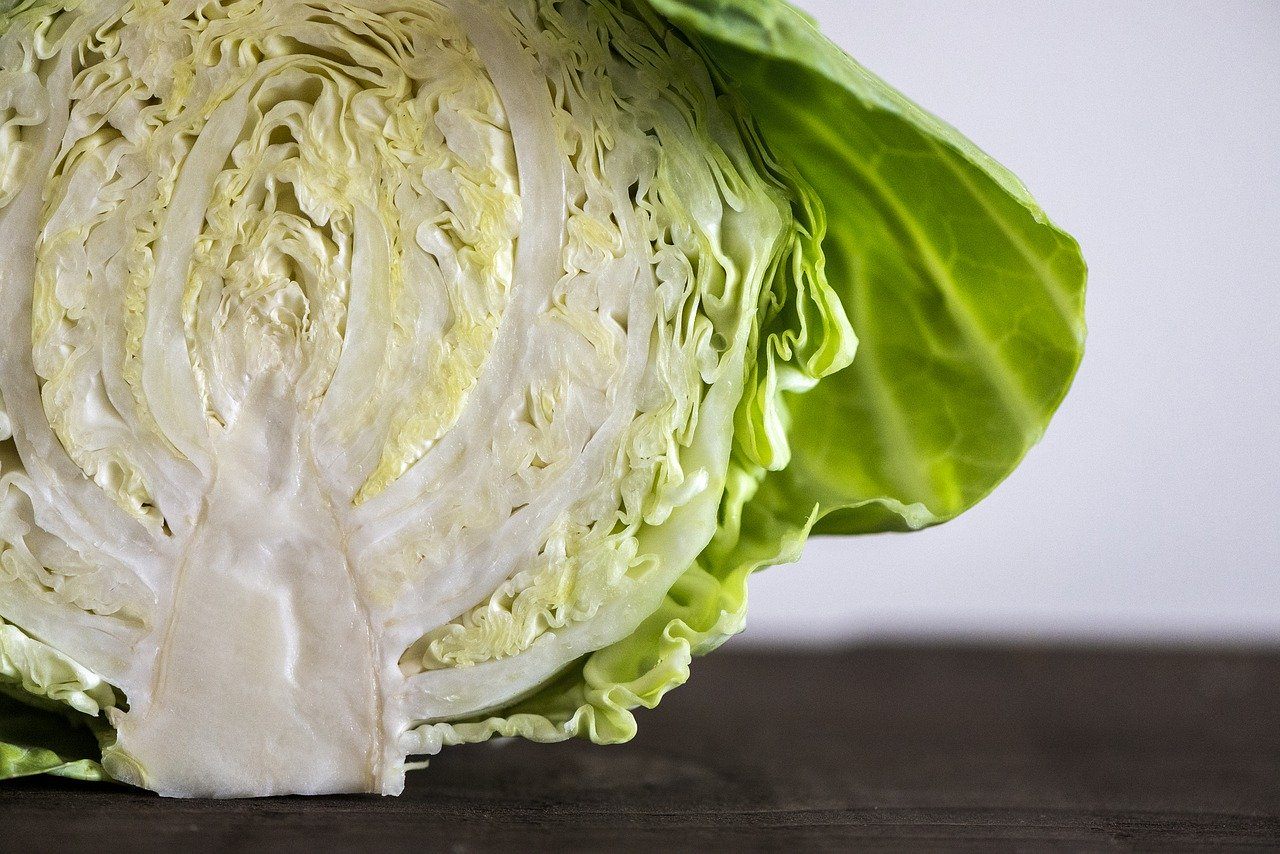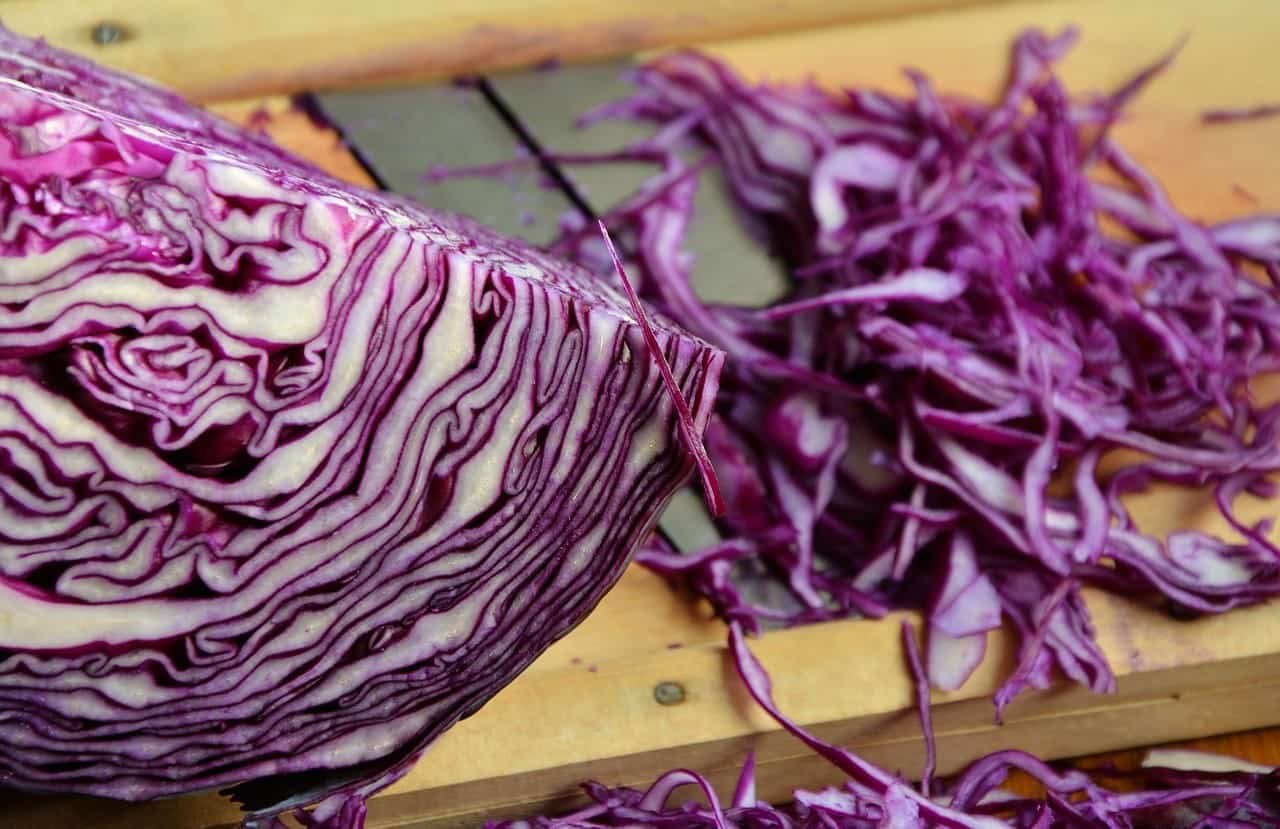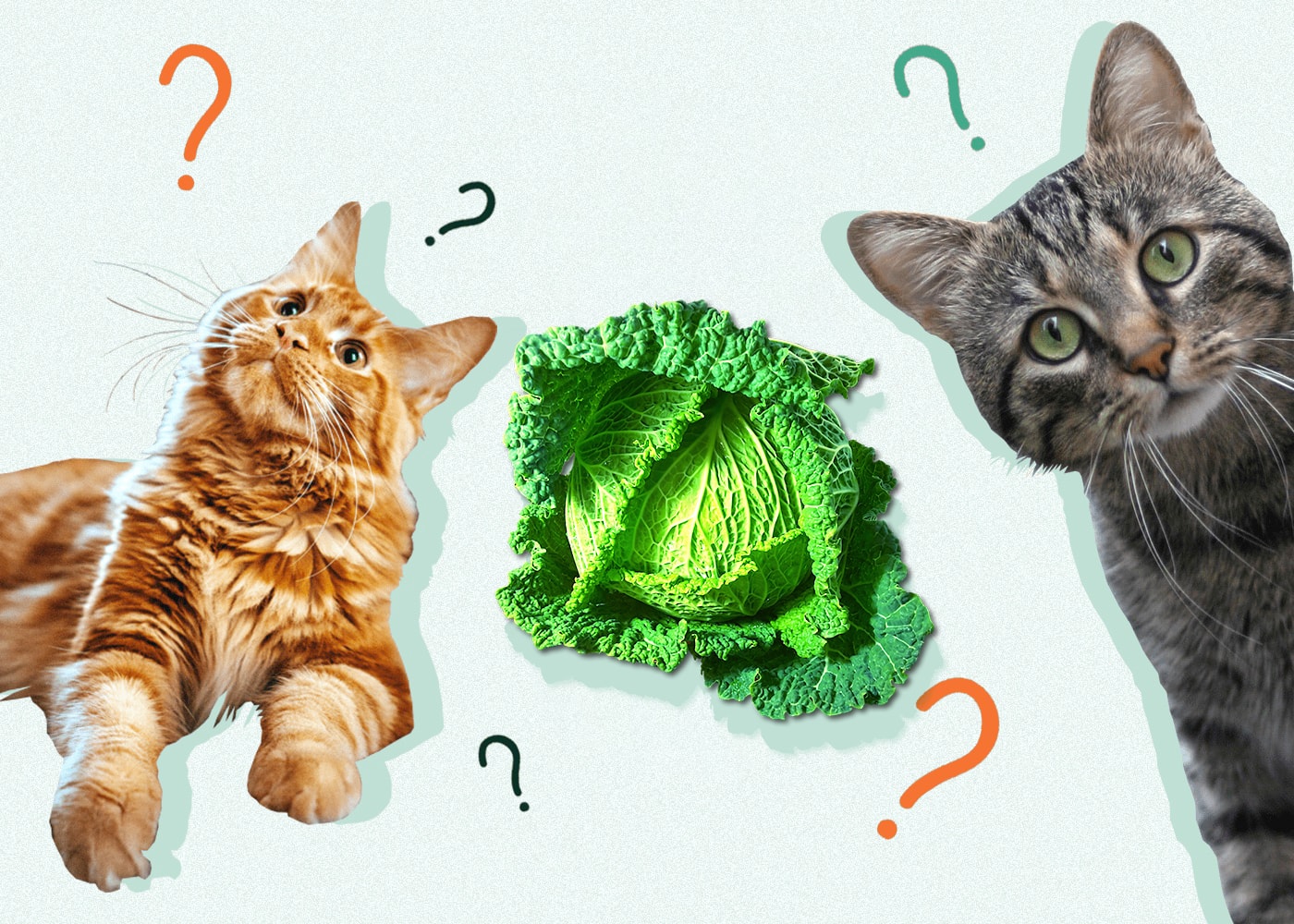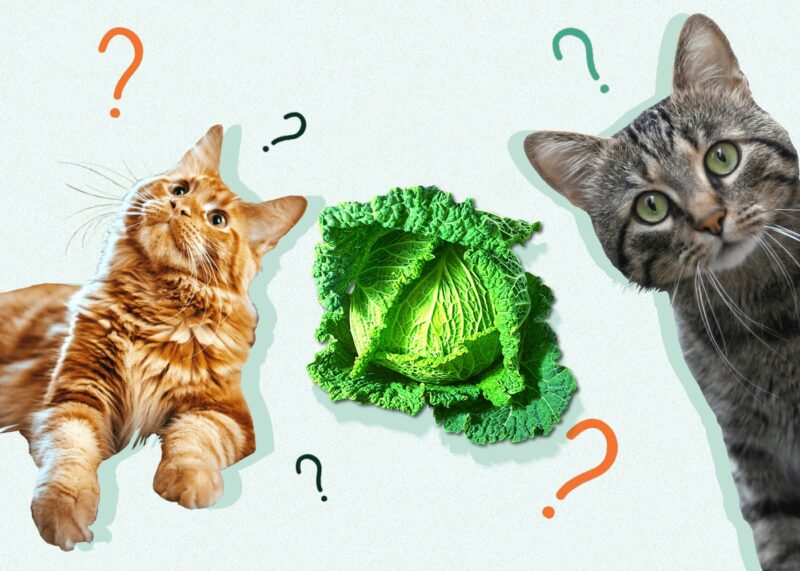With all of the health benefits that cabbage is said to have, you may wonder if it is safe to give some to your cats. Cats are obligate carnivores and thrive on a complete and balanced source of animal protein with all the essential amino acids, added vitamins, minerals, and other nutrients. There are some vegetables cats can occasionally eat in moderate amounts without experiencing ill effects, but that doesn’t mean they should.
Cabbage is not a dangerous food for cats and is safe for them to occasionally nibble on if prepared adequately, but cats will not benefit from eating cabbage, and there are more appropriate treats you can give your cat. There are a few things you should know before offering cabbage or other veggies to your feline friend.
Always consult with your vet before sharing any of your food with your cat, as it may not be safe for them depending on their age, health, underlying illness, or ongoing medication.

What Are the Health Benefits for Humans Who Eat Cabbage?
Cabbage is an extremely healthy vegetable for humans. It has tons of vitamins and minerals, including vitamins C and K, fiber, and calcium. If you struggle with inflammation, cabbage may be beneficial in reducing joint swelling and inflammation. Because of all the fiber that cabbage contains, it is also perfect for your digestive health. There are plenty of ways to prepare cabbage and use it in your diet.
Do Cats Get the Same Nutritional Benefits From Cabbage?
It is highly unlikely that cats will get any of the nutritional benefits from cabbage that humans do, and if there are some, they are not significant enough that your cat needs to have cabbage in their diet. Too much or too frequent cabbage in a cat’s diet can be detrimental to their health. There is no research that evaluated the benefits of cabbage for cats, and the health benefits that are recognized for humans should not and cannot be extrapolated to our feline companions. Cats are carnivorous by nature.
Always consult your veterinarian when it comes to your cat’s diet and food ingredients to ensure they are having a complete and balanced formula based on AAFCO recommendations.

What Are the Best Vegetables to Give a Cat?
As we mentioned earlier, cats are carnivores. They don’t need any vegetables in their diet to survive. Too many vegetables can lead to a digestive upset and will not give your cat any of the benefits you would expect to see in yourself. Cats need a high-quality source of animal protein in order to be healthy and thrive, and the amount of protein is higher than in a dog’s diet, varying depending on the cat’s age and stage of development or nutritional needs.
If your cat has developed a curiosity or liking for cabbage, before making cabbage a part of their diet, it’s important to consult with your vet. If you want to give your cat an occasional treat, here are better and more species-appropriate options to consider:
- Cooked meat, chicken or beef, without bones and any spices or seasonings, just plain
- Boiled eggs, or pasteurized, in order to minimize the risk of Salmonella
- Commercial cat treats
Whenever you introduce a new food in your cat’s diet, make sure that you start with a minimal amount. If it does not sit well in your cat’s stomach, it will be best to find out with a small amount rather than a significant amount.
When it comes to veggies that are safe for cats and may be considered safe occasional treats offered in moderation, there is a choice of boiled or steamed broccoli, brussels sprouts, carrots, green beans, and squash. However, first, check with your vet if these are appropriate for your cat based on their individual needs and health, and remember that too many veggies may be harmful to your cat.
How About Red Cabbage?
Red cabbage packs many of the same nutritional benefits that the other varieties of cabbage do. Again, you will want to use cooked cabbage in strict moderation, if at all, but you can use it as an occasional treat in your cat’s diet if your vet has given you the green light.

How Do You Prepare Cabbage for Cats to Eat?
Raw cabbage is quite difficult for cats to chew, and they won’t be able to digest it, leading to a stomach upset. Raw cabbage also contains thiocyanate, a compound that may have a negative effect on the thyroid gland if given regularly or in excess amounts. If your cat is exposed to enough thiocyanate over a long period of time, this could potentially have a negative impact on their thyroid, although there are no reports of this in literature.
The best way to offer a cat a little bit of cabbage is to cook it first. Although some of the nutritional benefits will be lost when it’s cooked, you will not have to worry about the above-mentioned risks.
When cooking cabbage, do not use any spices or oils. Simply boil the cabbage and then cut it into small pieces. We would not recommend trying to tempt or entice your cat to actually eat cabbage, as there are much better and more appropriate treat options for them and it should not be a regular part of their diet. But if your cat has developed a taste for it or has eaten a very small amount on their own, then we would not expect them to develop any serious health issues, as long as the amount of cabbage was moderate.
While sharing human food with your cat is not always safe, we have a solution that will keep you both smiling.
We've currently got a 40% discount to share on the HUMAN-GRADE premium cat food that ranked number #1 in our reviews! CLICK HERE & use code Catster24 to SAVE 40% on Smalls cat food!
How Much Cabbage Is Safe to Give My Cat?
Giving your cat too much cabbage can be detrimental to their health. For starters, the fact that cats are carnivores means that they don’t need the cabbage to survive, and certainly not to thrive. If you start replacing a good portion of your cat’s diet with vegetables instead of meat, you will be filling them with foods that are not full of the vitamins and minerals that they need to thrive, that are not balanced or complete, and that lack the essential amino acids cats need. This will lead to serious and, over time, life-threatening health issues for your cat. Cats need meat in their diet; it’s as simple as that.
A small piece of cabbage that your cat grabbed from the floor is unlikely to cause harm, but if you are considering using cabbage as a treat for your cat, then please consult with your vet first.
Learning about what your cat can and cannot eat is a crucial part of keeping them happy and healthy! Choosing a bowl to serve cat-friendly foods in is another important decision pet owners face. Satisfy the specific needs of your cat with the innovative design of the Hepper NomNom Cat Bowl. Learn why it’s our (and our cats!) favorite food and water dish here. At Catster, we’ve admired Hepper for many years and decided to take a controlling ownership interest so that we could benefit from the outstanding designs of this cool cat company!
Conclusion
Is cabbage safe for cats to eat? Yes. Is it something that you should run to the store and purchase and prepare for your cat right now? Not at all.
Cats don’t need cabbage to survive, and although it may work for an occasional treat, there are likely other vegetables that are easier to prepare and feed to your cat. Every time you decide to make any changes in your cat’s diet, it is essential to contact your vet and make sure you are following the best protocol.
See also:
Featured Image Credit: Alena Koval, Pexels; Ulleo, Pixabay












